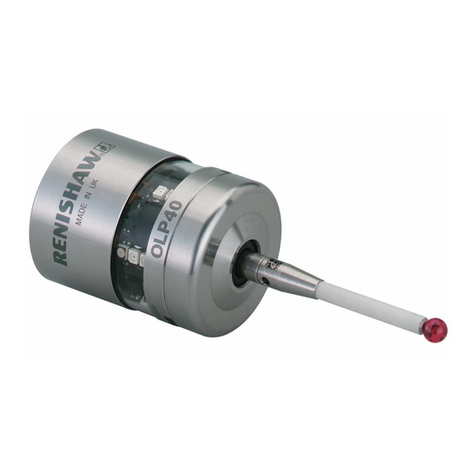Safety
Information to the user
Handle and dispose of batteries in accordance
with the manufacturer's recommendations.Use
only the recommended batteries. Do not allow the
battery terminals to contact other metallic objects.
Take care not to short the battery contacts as
this may be a fire hazard. Ensure that the contact
strips are located securely.
The OMP40-2 has a glass window, handle with
care if broken, to avoid injury.
Information to the machine supplier/
installer
It is the machine supplier's responsibility to
ensure that the user is made aware of any
hazards involved in operation, including those
mentioned in Renishaw product literature, and
to ensure that adequate guards and safety
interlocks are provided.
Under certain circumstances, the probe signal
may falsely indicate a probe seated condition. Do
not rely on probe signals to halt the movement of
the machine.
Information to equipment installer
All Renishaw equipment is designed to comply
with the relevant EEC and FCC regulatory
requirements.It is the responsibility of the
equipment installer to ensure that the following
guidelines are adhered to, in order for the product
to function in accordance with these regulations:
• any interface MUST be installed in a position
away from any potential sources of electrical
noise, i.e. power transformers, servo drives
etc;
• all 0V/ground connections should be
connected to the machine 'star point' (the
'star point' is a single point return for all
equipment ground and screen cables).
This is very important and failure to adhere
to this can cause a potential difference
between grounds;
• all screens must be connected as outlined
in the user instructions;
• cables must not be routed alongside high
current sources, i.e. motor power supply
cables etc, or be near high speed data lines;
• cable lengths should always be kept to a
minimum.
OMP40-2 installation guide
1.4
Before you begin





























